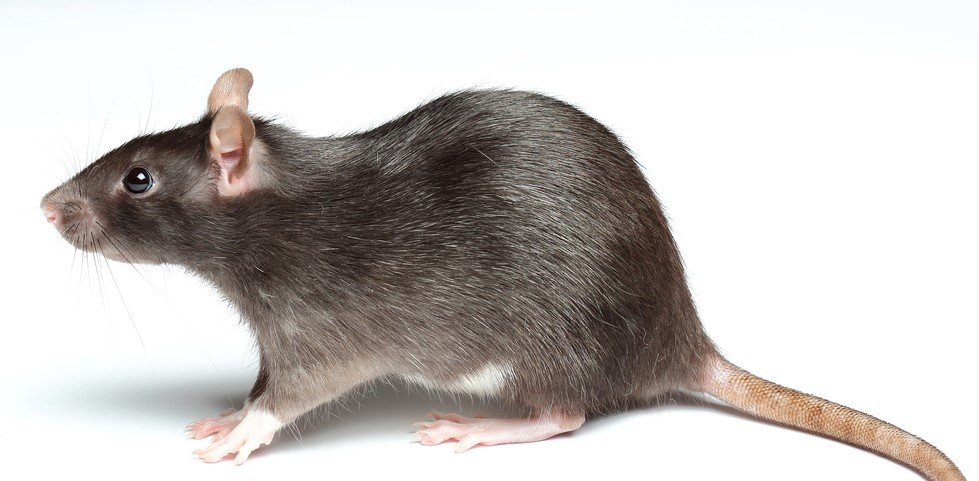Rodents
Rodent Abatement
Got a rodent problem? call the Rodent removal experts
Three Common Rodents Our Rodent Removal Services Target

Norway Rat
This rat is brownish on top of their body and grayish below their body. They are up to 18 inches long, including the tail. The rat has a thick, scaly tail that is shorter than the head and body combined. It has small eyes and hairy ears and weighs seven to 17 ounces.
These rats are mainly found on farms, cultivated fields, sewers, warehouses, and human dwelling places throughout the US.
Norway rats are agile climbers and good swimmers. They feed at night, but a daytime feeding indicates a large population. Their powerful teeth grow continuously and they gnaw through objects like wood, electrical cables, and pipes.
Norway rats like to eat stored cereals, meat, insects, wild plants, seeds, chicken eggs, and young poultry.

Roof Rat
This rat is dark brownish with a gray bellow. Roof rats are usually smaller than Norway rats and they have a slender tail that is longer than the head and body combined. They have almost hairless ears and weight up to nine ounces.
Roof rats live in the upper floors of buildings, trees, and lush vegetation (especially in well-landscaped yards). They may also live in seaports and ships. These rats are most common in the southern US and along the Atlantic, Gulf, and Pacific coasts.
Similarly to Norway rats, roof rats are agile and expert climbers. They also gnaw through wood, lead piping, and electrical cables. They build nests above ground, often in trees and tangled vines. Roof rats are the ones who carried the Black Plague in the 14th century.
Their food preferences include cereals, grains, nuts, and fruits.

House Mouse
House mice are grayish brown on top of their body and are lighter under their body. They are anywhere from five to seven inches long and don’t weight over a pound.
Mice live in buildings, cultivated fields, and areas with good ground cover.
Typically, mice are inquisitive and territorial. They contaminate food with urine and small droppings. The mice can chew or gnaw through walls, floors, baseboards, or electrical cords, leading to fire.
They like to eat seeds, cereals, grains, and sweets.
Rodent Related Health Problems
Rats
After spreading the bubonic plague by transporting infected fleas, probably nothing could redeem the rat in the eyes of humans. Indeed, even in the modern, developed world, rats and mice still carry diseases, although less serious ones than the plague. Bacterial diseases like Rat Bite Fever are less common, but the rat-borne bacterium Leptospira, which can cause jaundice, meningitis, and kidney and liver complications, has recently been a cause for concern in urban areas.
Mice
Mice can carry hantaviruses, some of which cause hantavirus pulmonary syndrome (HPS), which can be fatal to humans. A previously unknown, mouse-borne hantavirus that broke out in the Southwestern U.S. in 1993 has killed 122 people to date (as of August 1, 2002). The infected rodent’s urine, feces, and saliva contain the virus, which can be inhaled by humans when it becomes airborne. (Note: In the United States, the rodents carrying this type of HPS-causing hantavirus are deer mice, cotton rats and rice rats in the southeastern states, and the white-footed mouse in the northeast. The more common house mouse, Norway rat and roof rat are not known to carry this hantavirus.)

Save $25 on Your First Service
When you sign up for Alltra Pest Management Services, our Quarterly Pest Control Service.
Rodent Damages
Rodent urine also contains allergens that may be irritating to those with allergies or asthma who are exposed on a regular basis. In addition, rodent urine can stain surfaces – an unsightly way to detect their presence in your home.
All of these rodents will eat food and chew on property if they find their way into a home. Severe rodent infestations can result in structural damage. Mice and rats have also been known to chew through electrical wires. Rodent fecal droppings must be removed. Airborne pathogens are released into human occupied structures from dried fecal material.
Rodent Removal and Control
Professional control results are achieved with knowledge of rodent biology, nesting, mating, and feeding habits, as well as recognition of identifying trail and droppings. The professionals at A-1 Able Pest Doctors provide a wealth of information and experience on every job regarding rodent removal and control. We are ready to help with your rodent removal to give you, your family, or your employees peace of mind about your environment.
Warning! You must take extreme caution regarding rodent bait. All bait installed in or outside of a structure should be in a tamper resistant bait box. All traps should be placed where contact by children or pets cannot occur. Rodent carcasses should be handled with gloves and disposed of in plastic bag(s).
Call For Your Free Inspection
At A-1 Able Pest Doctors, we’re proud of the fact that our patients die. We offer a free inspection and no obligation estimate to eliminate and control pests in your home or office. Call for your inspection and estimate now!
